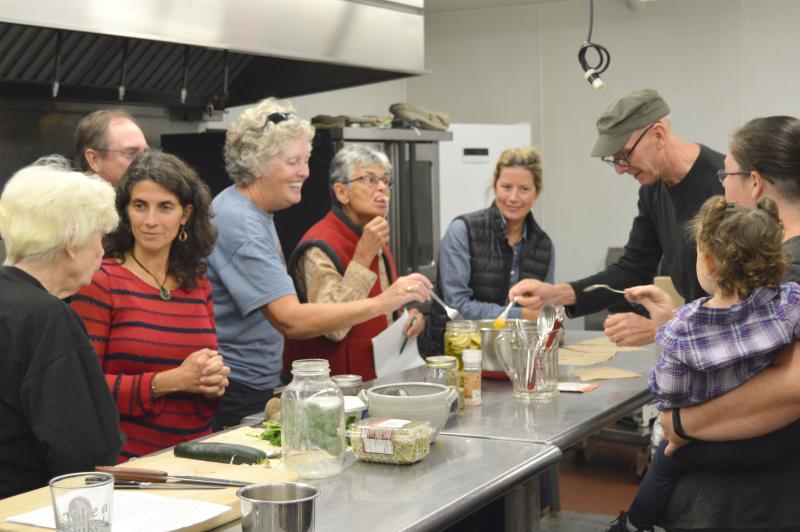Raw foods seminar is uncooked to perfection
During her workshop on Saturday, Liz Wiley occasionally had to correct herself when she referred to her course as a “cooking” class. That’s because the colorful, flavorful dish she assembled during the workshop didn't require a heat source.
“Raw food,” as it applies to the culinary arts, is a form of food preparation whereby dishes are either uncooked or cooked below 115 degrees. The diet emphasizes unprocessed foods and plenty of raw fruits and vegetables. The idea is that cooking at high temperatures destroys the nutritional value of foods, particularly enzymes that aid digestion.
Wiley’s workshop explored the perks of eating more raw food and included tips on how to eat local throughout the year. The workshop ended with a step-by-step tutorial on assembling a vegan-friendly “Buddha Bowl.”
The two-hour class was presented by Helfand Farm and was held in the Grange’s shared-use kitchen.
While raw food dishes are prepared without high temperatures, recipes do require some prep work. Outside of chopping veggies, recipes may call for a dehydrator or some light steaming.
While Wiley doesn’t solely subsist on a raw food diet, she said there are many benefits to eating at least one raw meal a day. For instance, raw foods are often high in fiber and Vitamins A and C.
Wiley, who is the education and project manager from Round the Bend Farm, spent the first half of the workshop discussing the finer points of selecting vegetables.
She said that, for those who participate in CSAs and frequent farmers markets, customers can further support local farmers by buying in bulk when seasonal produce is plentiful. This not only helps farmers sell their products, it enables shoppers to save money in the long run.
The trick is to learn how to preserve seasonal fruits and vegetables for future use.
“If we really want to support local farming and farmers, then we have to have that commitment to processing food. You’ll find, over time, the more of this that you do, the more you save,” said Wiley.
“Going through the preserving process – canning, freezing, fermenting – it doesn’t reduce any of the nutrition benefits. You’re processing in a way that you’re going to be able to reap those nutrition benefits months into the future,” she said.
For those who are uninterested in loading up on raw produce, Wiley recommends cooking with locally sourced products.
“You balance. We’re going to lose some nutrients in the cooking process, but start out with a high-quality vegetable that’s grown locally by a farmer that you know,” said Wiley.
In the last half of the class, participants gathered around as Wiley prepared a Buddha Bowl. The dish combines grains and vegetables and choosing specific ingredients for the dish is a task left up to the chef.
She said that, typically, the bowls consist of 50 percent grains, 35 percent vegetables, 10 percent legumes and the remaining 5 percent is composed of fermented vegetables and a sea vegetable of some kind, such as wakame. The dish is then topped with a creamy nut or seed dressing.
The dish she prepared during the workshop combined sprouted wheat berries, strips of zucchini, shredded beets, avocado slices, sprouts, scallions, kale, tofu, fermented cabbage and nori flakes. She made her own tahini dressing.
“The fun thing about the Buddha Bowl is that you can use whatever you have on hand,” said Wiley.
















